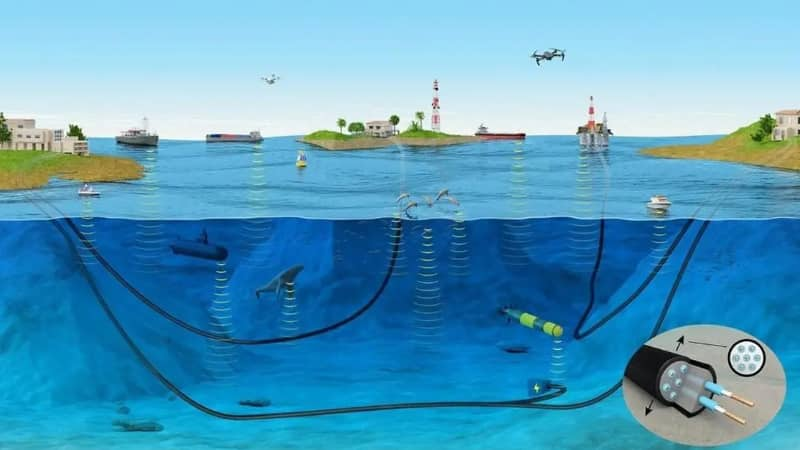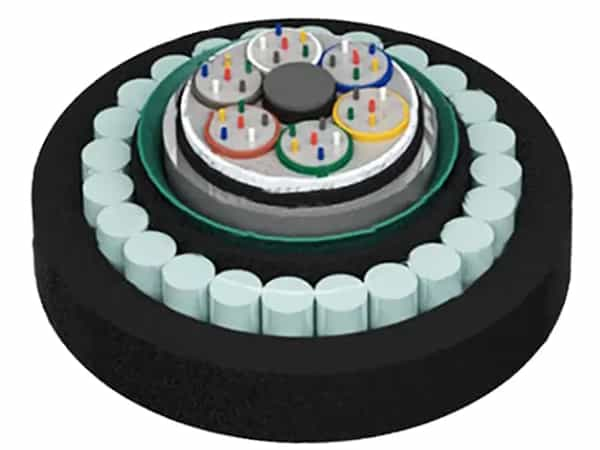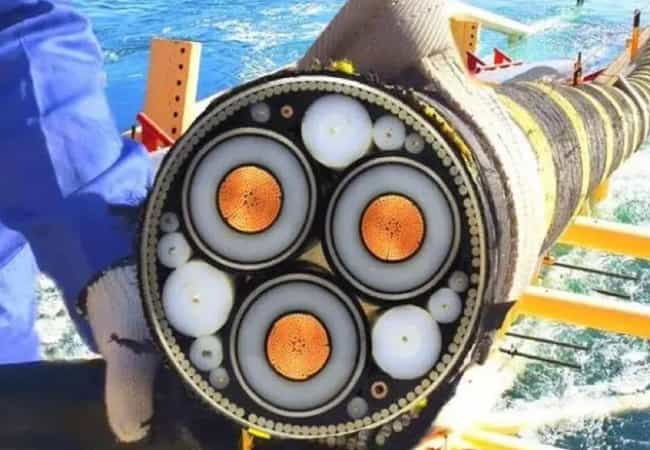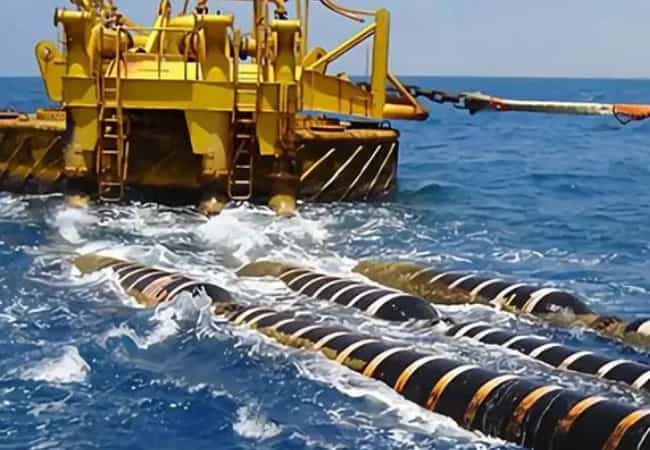
Global communication has radically transformed in recent decades, and at the heart of this revolution are the Submarine Fiber Optic Cables. These cables not only facilitate Internet connectivity, but they are also essential for the functioning of a multitude of digital services that we use daily.. This article delves into the world of submarine fiber optic cables, exploring its operation, its impact on global connectivity, and practical aspects such as manufacturers and prices.
1. What is an Underwater Fiber Optic Cable??
And submarine fiber optic cable is a type of cable designed to transmit data over long distances underwater. These cables are made of glass fibers that allow light transmission., resulting in extremely high data transmission capacity. Generally, A submarine fiber optic cable consists of a fiber core, coating, reinforcement materials and an outer shell resistant to the conditions of the marine environment.
1.1 Structure of a Submarine Cable
- Fiber Core: The central part where data is transmitted in the form of light.
- Coating: Provides insulation and reflects light back to the core.
- Reinforcement Material: Steel and plastic layers that protect the cable from physical damage.
- Outer Cover: Made of materials resistant to corrosion and adverse ocean conditions.
2. Operation of Fiber Optic Cables
Los submarine fiber optic cables They use the principle of total internal reflection. When data is converted into light signals, These travel through the fiber core, where they are repeatedly reflected in the coating, allowing the signal to reach great distances with very little loss of quality.
2.1 Advantages of Fiber Optic over Copper
Compared to copper cables, Fiber optic cables offer several advantages:
- Greater Data Capacity: They can handle a much larger volume of information simultaneously.
- Lower Attenuation: The signal is lost less, allowing longer transmission distances without the need for repeaters.
- Immunity to Electromagnetic Interference: Light signals are not affected by external interference, which improves the quality of communication.
3. Underwater Internet Cables in the World

Los underwater internet cables They are essential for global connectivity. Approximately the 99% of international data is transmitted over these cables. There are thousands of them in operation, connecting continents and facilitating access to digital services.
3.1 Main Submarine Cable Routes
Submarine cable routes are strategically designed to maximize efficiency and connectivity. Some of the main routes include:
- Transatlantic: Connects North America and Europe.
- Transpacific: Links North America with Asia.
- Regional Cables: They connect islands and remote regions with the mainland.
4. Submarine Fiber Optic Cable Manufacturers
The industry of submarine fiber optic cables It is competitive and constantly evolving. Some of the main submarine fiber optic cable manufacturers include:
- Dosense Cable: With a long history in the design and manufacture of submarine cables,recognized for its innovation and advanced technology in telecommunications. A major player in the installation and maintenance of submarine cables.
4.1 Manufacturing Innovations
Technological advances have led to the creation of more efficient and durable cables. New materials and design techniques are allowing cables to be lighter, flexible and resistant to adverse sea conditions.
5. Price of Submarine Fiber Optic Cable

He submarine fiber optic cable price can vary significantly depending on several factors, such as cable length, the materials used and the technology involved.
5.1 Factors Affecting Price
- Cable Length: Longer cables generally cost more due to material and labor costs.
- Transmission Technology: Cables that incorporate cutting-edge technology, as higher capacity fiber, they tend to be more expensive.
- Installation Costs: Installation in deep or challenging waters can significantly increase the total price.
5.2 Cost Estimates
Installation prices for submarine fiber optic cables can range between 1 million and 30 million dollars for each 1000 km, depending on the factors mentioned. This cost includes both the cable and the installation and maintenance process.
6. Sales and Market Trends
The market of submarine fiber optic cables is booming, driven by growing demand for high-speed internet services and the expansion of digital infrastructure around the world.
6.1 Growth Projections
The market is expected to grow significantly in the coming years, with an increase in investment in new routes and technology. Demand for data transmission services, driven by the digitalization of the economy, will continue to be a key driver of this growth.
6.2 Main Market Players
Telecommunications companies, as well as internet service providers, are the main buyers of submarine fiber optic cables. Some of the companies that invest in this sector are:
- Amazon
These companies are developing their own submarine cable networks to ensure faster and more reliable access to their services..
7. Impact on Global Connectivity Submarine Fiber Optic Cable

Los fiber optic cables in the sea are crucial for global connectivity. They allow communication between countries, access to information and services, and are essential for the functioning of the digital economy.
7.1 Social and Economic Benefits
- Internet access: They allow remote communities to connect to the digital world, improving education and economic opportunities.
- Drive for Innovation: They facilitate collaboration between countries and companies, promoting technological and scientific innovation.
7.2 Connectivity Challenges
Despite its benefits, There are challenges associated with submarine fiber optic cables, including vulnerability to physical damage and security threats.
8.Prices for submarine fiber optic cables
The price of submarine fiber optic cables depends on several factors, such as cable length, the capacity, technological specifications and market demand. The cost of laying new cable can be exorbitant, with estimates ranging from hundreds of millions to billions of dollars, depending on the complexity and scope of the project.
Several factors contribute to this high cost:
Cable manufacturing: Producing high-quality submarine cables involves specialized materials and manufacturing processes, which increases the overall cost.
Implementation on ships: Laying cables in the ocean requires specialized ships equipped with heavy-duty equipment capable of supporting the weight and depth of the cables..
Permits and regulations: Navigating the complex regulatory landscape of different countries and international organizations can be costly and time-consuming.
Maintenance and repair: once deployed, cables require ongoing maintenance and occasional repairs, which can be expensive and a logistical challenge.
Despite the high initial costs, The long-term benefits of submarine cables, including increased connectivity, economic growth and improving disaster resilience, often exceed the initial investment.
9. Market trends and sales of Submarine Fiber Optic Cable
Demand for submarine fiber optic cables continues to grow, driven by growing broadband Internet adoption, cloud computing and other high bandwidth applications. As the world's population becomes more connected, The need for faster, more reliable Internet connectivity becomes more urgent.
The submarine cable market is highly competitive, and leading manufacturers invest heavily in research and development to stay ahead. Innovations in cable technology, such as higher bandwidth capacity and longer durability, are driving sales and creating new growth opportunities.
At the same time, the industry faces challenges, including environmental concerns related to cable laying and disposal, as well as the possibility of disruptions due to natural disasters or human activities. Address these challenges and, at the same time, Continuing to meet the growing demand for Internet connectivity will be key to the future success of the submarine fiber optic cable industry.
10. Submarine Fiber Optic Cable Manufacturer-Dosense Cable
Submarine fiber optic cables are an essential component of the modern world's telecommunications infrastructure.. Its ability to transmit large volumes of data at high speeds has transformed the way we communicate and do business.. As demand for connectivity continues to grow, the industry will continue to evolve, offering new opportunities and challenges.
If you are interested in more information about submarine fiber optic cables, its operation, or how they affect global connectivity, feel free to ask. The communication of the future is here, under the waves!
